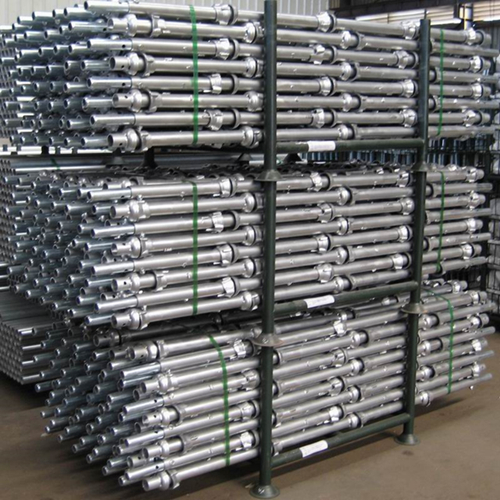
ADTO News
What is the Best for Storing Cuplock Scaffolding to Maintain Its Quality?
Here are the best practices for storing cuplock scaffolding to maintain its quality.
1. Location Selection
Dry and Ventilated Area
The storage area should be dry to prevent rust and corrosion. High humidity or exposure to water can cause the metal components of the scaffolding to deteriorate. A well-ventilated space helps to reduce condensation, which can also lead to corrosion. For example, an indoor warehouse with proper ventilation systems such as vents or fans is an ideal choice.
Avoid areas that are prone to flooding or have a high water table. Even a small amount of standing water can damage the scaffolding over time.
Away from Chemicals and Corrosive Substances
Store the scaffolding away from chemicals such as acids, alkalis, and salts. These substances can react with the metal and cause corrosion. Industrial areas with chemical emissions or areas near saltwater (coastal regions) should be avoided if possible. For instance, if the scaffolding is stored near a chemical factory, fumes containing corrosive gases may accelerate the degradation process.
2. Component Organization
Vertical Storage of Tubes:
Vertical tubes of the cuplock scaffolding are best stored vertically. This helps to prevent them from bending or warping under their own weight. You can use racks or stands designed specifically for storing scaffolding tubes. These racks keep the tubes in an upright position and also allow for easy access and inspection.
When stacking vertical tubes, make sure they are properly aligned to avoid any misalignment that could lead to damage during storage or when the scaffolding is retrieved for use.
Horizontal Storage of Other Components:
Horizontal tubes, cuplock joints, and other small components such as pins and fasteners should be stored separately. Horizontal tubes can be stored on shelves or in bundles. Make sure there is enough space between the tubes to prevent scratching or denting of the surfaces.
Cuplock joints can be stored in boxes or bins. Label these containers clearly to make it easy to identify the components and find them when needed. Small parts like pins and fasteners should also be stored in labeled containers to avoid loss.
3. Stacking and Loading Considerations
Proper Stacking Heights:
When stacking scaffolding components, be aware of the maximum safe stacking height. Over - stacking can lead to damage of the components at the bottom due to excessive weight. The stacking height should be determined based on the strength and capacity of the storage racks or the floor if the components are stored directly on the ground.
For example, if you are storing bundles of horizontal tubes, make sure the weight of the upper bundles does not exceed the load - bearing capacity of the lower ones to prevent crushing and deformation.
Even Loading and Support:
Ensure that the weight of the stored scaffolding is evenly distributed. If the load is uneven, it can cause stress concentrations on the storage racks or the floor and may lead to structural damage. Use pallets or other support structures to evenly distribute the weight of the scaffolding components.
For example, when storing heavy vertical tubes, place them on pallets and make sure the pallets are level and in good condition to provide stable support.
4. Protection and Maintenance during Storage
Covering and Dust Prevention:
Cover the stored scaffolding with tarpaulins or plastic sheets to protect it from dust and other airborne particles. Dust can contain corrosive substances or abrasive materials that can damage the scaffolding surfaces. The cover should be large enough to completely cover the stored components and should be secured to prevent it from being blown away.
Regularly clean the storage area and the scaffolding components to remove any accumulated dust. A simple wipe - down with a clean, dry cloth can help to keep the surfaces free of debris.
Periodic Inspection and Maintenance
Conduct regular inspections of the stored scaffolding. Check for signs of rust, corrosion, damage to the tubes (such as dents or cracks), and the condition of the cuplock joints and other components. If any rust is detected, it should be treated immediately. You can use rust - removers and apply anti - corrosion coatings such as paint or zinc - rich primers.
Tighten any loose fasteners or pins during the inspection. This helps to ensure that the components are in good working condition when the scaffolding is needed for a project. Also, check the functionality of the cuplock joints to make sure they can still lock and unlock properly.


 Live Chat
Live Chat

